Great Britain crown Queen Victoria 1887, British silver coin, rainbow toned
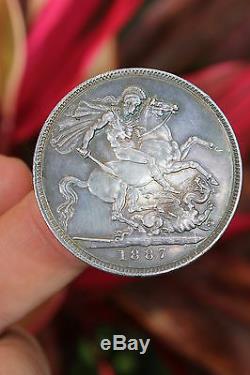
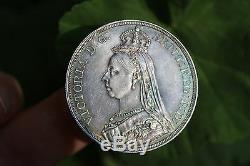

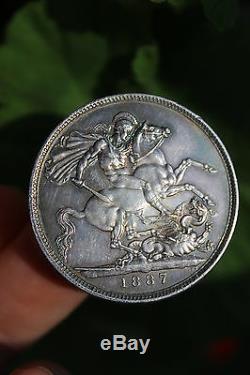
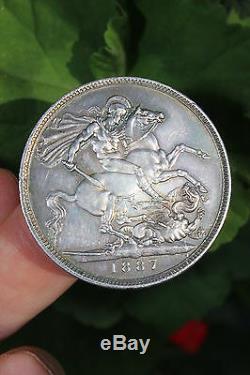
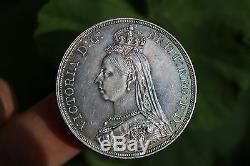

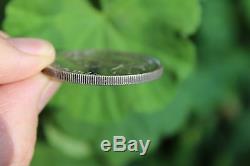




Great Britain crown Queen Victoria 1887, British silver coin, attractive rainbow toned. Victoria (Alexandrina Victoria; 24 May 1819 22 January 1901) was Queen of the United Kingdom of Great Britain and Ireland from 20 June 1837 until her death.
From 1 May 1876, she used the additional title of Empress of India. Victoria was the daughter of Prince Edward, Duke of Kent and Strathearn, the fourth son of King George III. Both the Duke of Kent and King George III died in 1820, and Victoria was raised under close supervision by her German-born mother Princess Victoria of Saxe-Coburg-Saalfeld. She inherited the throne at the age of 18, after her father's three elder brothers had all died, leaving no legitimate, surviving children.The United Kingdom was already an established constitutional monarchy, in which the sovereign held relatively little direct political power. Privately, Victoria attempted to influence government policy and ministerial appointments. Publicly, she became a national icon, and was identified with strict standards of personal morality. Victoria married her first cousin, Prince Albert of Saxe-Coburg and Gotha, in 1840. Their nine children married into royal and noble families across the continent, tying them together and earning her the nickname "the grandmother of Europe".
After Albert's death in 1861, Victoria plunged into deep mourning and avoided public appearances. As a result of her seclusion, republicanism temporarily gained strength, but in the latter half of her reign, her popularity recovered. Her Golden and Diamond Jubilees were times of public celebration. Her reign of 63 years and seven months, which is longer than that of any other British monarch and the longest of any female monarch in history, is known as the Victorian era. It was a period of industrial, cultural, political, scientific, and military change within the United Kingdom, and was marked by a great expansion of the British Empire.
She was the last British monarch of the House of Hanover. Her son and successor, Edward VII, belonged to the House of Saxe-Coburg and Gotha, the line of his father. The item "Great Britain crown Queen Victoria 1887, British silver coin, rainbow toned" is in sale since Monday, March 2, 2015.
This item is in the category "Coins & Paper Money\Coins\ World\Europe\UK (Great Britain)\Crown". The seller is "ukr10" and is located in Clearwater Beach, Florida.This item can be shipped worldwide.
- Circulated/Uncirculated: Circulated
- Year: 1887
- Composition: Silver
- Country/Region of Manufacture: United Kingdom
- Grade: EF/About Unc


